Skateboarding has quickly become a favorite pastime activity for people all over. Different styles, different boards, different areas to skate in; how could it not be a favorite!
Practicing every day is the key to your skateboarding success.
Why practice every day
Practicing over and over again will not only help improve your skills with the board but with your muscle memory and mental training.
Once you skateboard enough, your muscles remember what to do and your mind will be trained on how to think as well. This will break you through to a whole new level of boarding!
How To Improve Your Skateboarding Faster
There are so many ways for you to get better at skateboarding. Don’t give up if you don’t understand something! You probably won’t master everything right away, but that’s why you practice until you feel confident enough to move to the next step.
1. Watch videos
So many people, even the pros, have put videos out there for us to watch and learn from. Find some helpful videos on the areas you want to improve on.
The best part is that you can watch videos over as many times as you need to in order to pick up on the skill you’re trying to learn.
2. Back to basics
Learn all of the basics! You can’t skip over these, otherwise, you have nowhere to start your skateboarding journey.
Practice basics every day, even when you get good at them. Basics will always be important in your improvement so never stop practicing these too from time to time.
3. Don’t stay comfortable
Get out of that comfort zone you want to stay in. Push yourself a little more every day. It might be a little scary, but if you never leave it you won’t push yourself to try something new.
Perfect the basics, but keep working at something new once you’re a master at those.
4. Keep yourself balanced
Start off by practicing with your balance on your board. You need to know how it feels underneath you and how you feel on it.
Learn to be comfortable balancing yourself on your board. Start off by standing stationary and shift your body weight a little back and forth to get used to the movement.
5. Don’t try Mongo
The Mongo Method will not maximize your stability on your board at all. Take more time learning how to push yourself properly on your board. The more time you spend practicing that, the more stability you’ll have.
6. Strong and steady
Take your time building your skills. Practice every day to steadily build yourself up for new tricks and even different styles.
Practice makes perfect! Don’t rush through the learning process. Find a good pace you can learn at and keep at it.
7. Socks
Yes, I said socks because those matter too. Wear thicker, higher “skateboarding” socks every time you board. They’ll give your feet more support and comfort when on your board and landing tricks; not to mention a little more protection for your legs.
8. Take a trip
Get yourself out to the skateparks and meet some new people. Go make some friends, watch them, and share tips and advice with one another to improve. Teach them if you can, but learn from them too!
9. Falling made easy
Teach yourself how to fall properly. Wear protective equipment to give yourself a little padding. Helmets, knee, elbow, and wrist pads will all help protect your most vulnerable areas.
Run out your trick if you notice it going south. Don’t stay on the board, get off and run out of it.
Avoid landing on your palms and as you’re falling roll yourself over to your back so you don’t land on your front.
10. Always keep your balance
Learn and practice where you feel most comfortable placing your feet where they can be shoulder-width apart and at an angle. You want to line your feet up with the trucks on the deck and keep them at a 45-degree angle from the edge of your board
You could have a “regular” (left foot in front) or “goofy” (right foot in front) stance, but either one is fine. Goofy isn’t uncommon and regular isn’t the normal stance, just figure out what leg you feel more comfortable balancing on and which one you can push better with.
Either way, whatever foot you lead with should be over the trucks in the front of your board and the foot you push with will end up covering the trucks on the back of your board.
Don’t place all of your weight on one foot. Distribute your weight so that it’s even. Make sure you bend your knees slightly to steady yourself and make sure to turn your head in the correct direction. (Left if your left foot is in front, right if your right foot is in front).
11. Visualize, visualize, visualize
Visualize in your mind yourself doing a trick. Visualize it step-by-step, see each step clearly and then go complete the trick in real life. If you can’t see yourself doing the trick, you won’t be able to pull it off.
12. Fakie, Switch, and Ollies
Change your style up when you finally get comfortable. The fakie style has you ride your board backwards, the switch style is when you switch the position of your riding and pushing foot. Different styles lead to different tricks.
Practice your ollies while you’re stationary before you try it moving. You’ll get a better feel for the board and how it lands. It’s easier to practice stationary before you add movement into the trick. You’ll have a better chance of landing while moving once you can successfully do it standing still.
13. Core strength
Your core is what gives you your power and balance on a board. Your core will get stronger with practicing on your board, but try to find a different way to work it out and strengthen it.
I’m not saying that you have to hit the gym every day, but the stronger your core gets, the stronger your skateboarding gets.
14. Watch Yourself
Film yourself doing your tricks. Just like the how-to videos, you can watch it as many times as you need to. You’ll be able to pick out where you’re struggling and see what you’re doing wrong.
15. Always have goals
Always set goals, but make sure they’re realistic. Don’t set standards too high and get frustrated.
Start slow and easy. Harder things will become easier to do when you set smaller goals for yourself.
If you’re trying to land a trick, start by making your goal to land it with one foot before you land it with both feet.
16. 20 minutes of bouncing?
Yup, you read that right. Jump rope is one of the best exercises for skateboarders. Give yourself 20 minutes a few times a week and watch your boarding improve.
17. Be authentically you
Be yourself when boarding. Don’t compare yourself to the other skaters. You’re all at different places. Just focus on yourself and your goals.
Trying to impress other skates is a no-go too. They’re there to work on improving too so stick to your goal of improving and not trying to show other people up.
Stay confident while on your board, but not cocky. Chances are you won’t mesh well with the other people there if you’re too big in the head.
Stay positive, don’t get discouraged, and ask for some tips or advice if you need it.
18. High quality or bust!
Get yourself a high-quality board and shoes to make sure you’re the most comfortable you can be. A high-quality board will be durable, but lightweight with the flexibility you need.
The shoes should be leather or suede if you’re going hightop (flexibility and durability) and have a thick sole for support and less wear and tear.
Figure out how you’re comfortable standing on the board. Once you figure that out you’ll know which stance you are.
Give it some practice on a level area. It’s much easier to get a feel for and figure out how to move yourself when you don’t have to deal with obstacles.
Use both your heel and toe to get the board to turn. Figure out how much you need to lean with your body to get movement.
Practice this movement standing still and make sure you’re practicing turning and leaning both ways.
Best tips to get yourself better at skateboarding
- Practice, practice, practice
- Don’t skimp on the basics
- Watch training videos
- Get to a skatepark
- Learn your comfort areas
- Break out of those comfort areas
- Don’t compare yourself to anyone
- Know how to fall
- Get yourself some high-quality gear
FAQs
1. How long does it take to learn a trick?
Ans. Everyone is different, but it generally takes 1-2 months to perfect a trick.
2. Should I practice with a coach?
Ans. Not necessarily. You can ask fellow boarders for help and advice, watch videos, and film yourself. You know how you learn best, so use that to your advantage and teach yourself what you want to know.

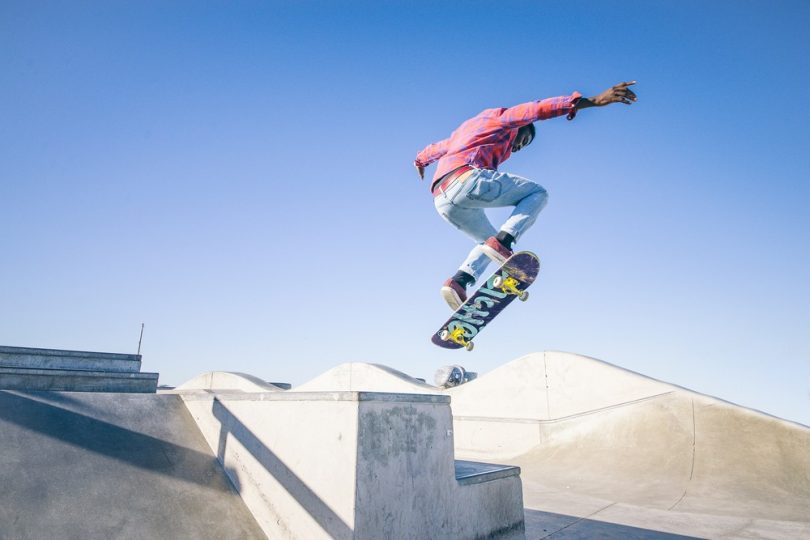
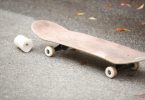
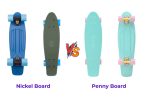
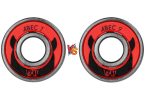
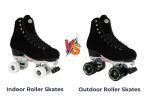
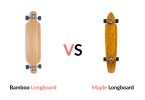
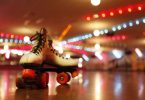

Leave a Comment